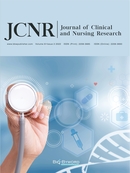Abstract
Objective: To explore the characteristics of intelligent syndrome diagnosis and intelligent syndrome differentiation of pediatric sweat syndrome by retrospectively studying the traditional Chinese medicine (TCM)-based diagnosis and rule of drug use on pediatric sweat syndrome in China Academic Journal Full-text Database (CNKI), Wanfang Database (WF) and VIP database. Methods: Modern literature on pediatric sweat syndrome was collected with Endnote software, and the collected data were input into The Microsoft Excel 2010 table. TF-IDF relative entropy quantitative analysis was used to extract the intelligent diagnosis and intelligent medication rule of pediatric sweat syndrome in modern literature. Results: TF-IDF was used to obtain the syndrome’s type-symptom fuzzy matrix and syndrome’s type-TCM fuzzy matrix of qi-yin deficiency and qi-deficiency. Conclusion: The intelligent syndrome diagnosis and intelligent syndrome differentiation law of modern data mining in the treatment of children sweat syndrome accord with the basic theory of TCM, and can provide clinical reference to a certain extent.
References
Wang L, Xiong L, Yu Y, Wen Z, 2021, Wen Zhongyu’s Experience in Treating Children Sweat Syndrome. Journal of Practical Traditional Chinese Medicine, 37(03): 495–496.
Xu H, 2017, Research Overview of Traditional Chinese Medicine in the Treatment of Children Sweat Syndrome. Inner Mongolia Journal of Traditional Chinese Medicine, 36(06): 138+177.
Shi C, Xu C, Yang X, 2009, Review of TFIDF Algorithm. Computer Applications, 29(S1): 167–170+180.
Yu J, Yu Q, Zhang T, et al., 2015, Quantitative Study of TCM Syndromes Based on TF-IDF Relative Entropy. World Science and Technology - Modernization of Traditional Chinese Medicine, 17(10): 1986–1991.
Yu J, Yu Q, Zhang T, et al., 2018, Application of Fuzzy Diagnosis Matrix Based on TF-IDF Quantization in Traditional Chinese Medicine Diagnosis. Shi Zhen Traditional Chinese Medicine, 29(07): 1784–1785.
Zhang B, 2002, Cheng Convenient Reading. China Traditional Chinese Medicine Publishing House, Beijing, 9.
